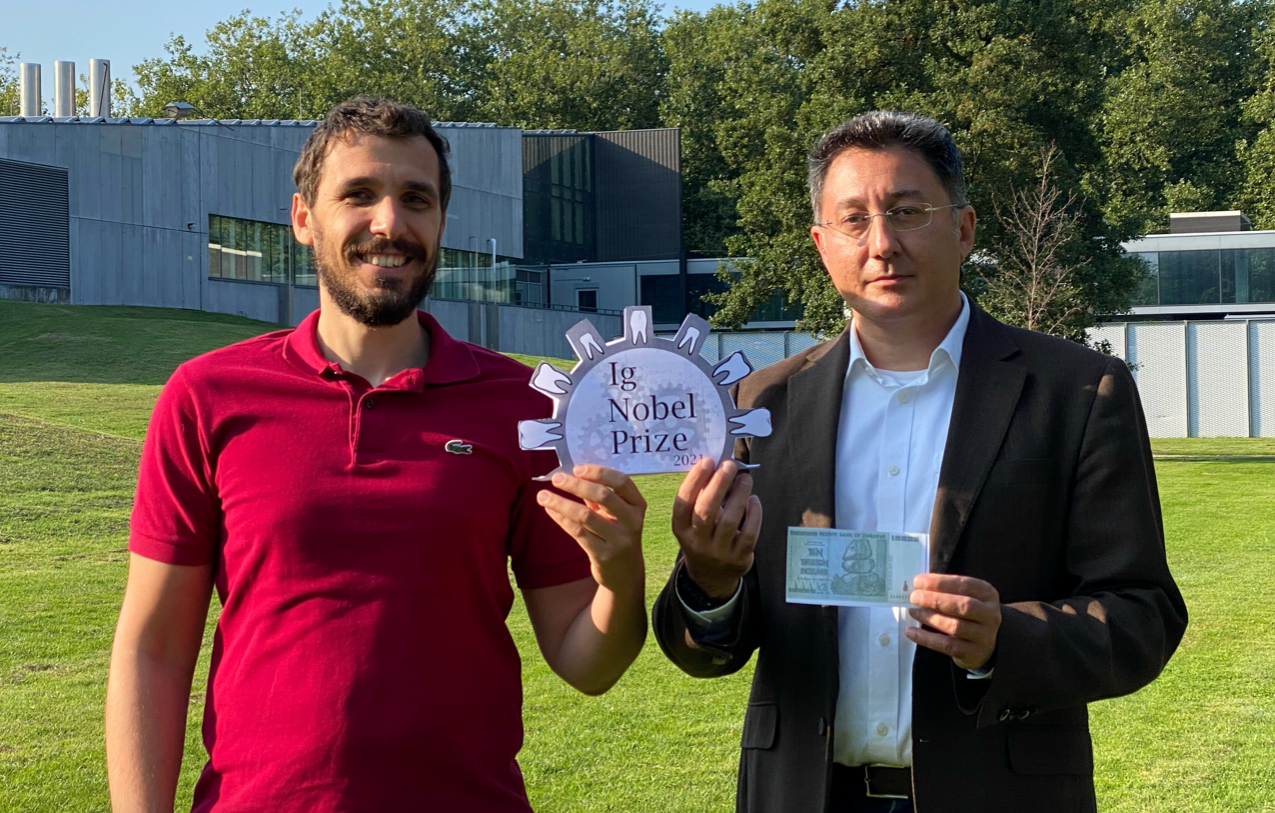
Two scientists from Eindhoven University of Technology (TU/e) in the Netherlands have been awarded the Ig Nobelprijs for their research into how people move in crowds. Federico Toschi and university researcher Alessandro Corbetta discovered, among other things, that on average people keep a minimum distance of 75 centimetres from each other so as to avoid collisions.
To do this, the two observed 5 million pedestrians on platforms at the Eindhoven train station for six months. They discovered that on average, people keep a minimum distance of 75 centimeters from each other. It turns out that pedestrians are subconsciously constantly busy trying to avoid collisions with oncoming traffic by changing their walking path meters in advance if a collision is likely.
The alternative Nobel Prizes were created for “achievements that make people first laugh, and then think.” The prize, awarded annually since 1991, has cult status among scientists. Dutch-British physicist Andre Geim is the only scientist to win both the Ig Nobel Prize for his research, and the real Nobel Prize in Physics ten years later. Since the creation of the prize, Dutch scientists have won this distinction 15 times.
Predictive
Using their ‘big data’, the Eindhoven researchers developed a statistical model that can predict pedestrian movements with great accuracy. This way, you know in advance how many pedestrians will run, walk, dodge, turn around or collide in a defined space, such as a corridor or tunnel.
Corbetta: “While we were building our model, we discovered two ‘social forces’: a long-range one based on vision, and a short-range one to avoid any actual physical contact. These forces cause people to adjust their current walking paths to avoid bumping into other people.
Spreading out masses of people
“I dream of eventually understanding the dynamics of crowded masses of people,” Toschi explains. In fact, it seems that, statistically speaking, there are universal characteristics of how pedestrians move in a crowd, independent of the location being measured.
As such, recognizing these patterns could be essential in the future when it comes to predicting and ultimately managing the natural walking routes of pedestrians. Toschi: “This is how we can design places where a lot of pedestrians congregate in a safer and more efficient way, based on the natural walking behaviors of people. Consider museums, but also festivals. How do we prevent congestion? How can we spread crowds around an area as widely as possible? We are trying to manipulate the social system, as it were, but with good intentions.”
Also interesting: Nobel Prize winner to students: “You can change future”

